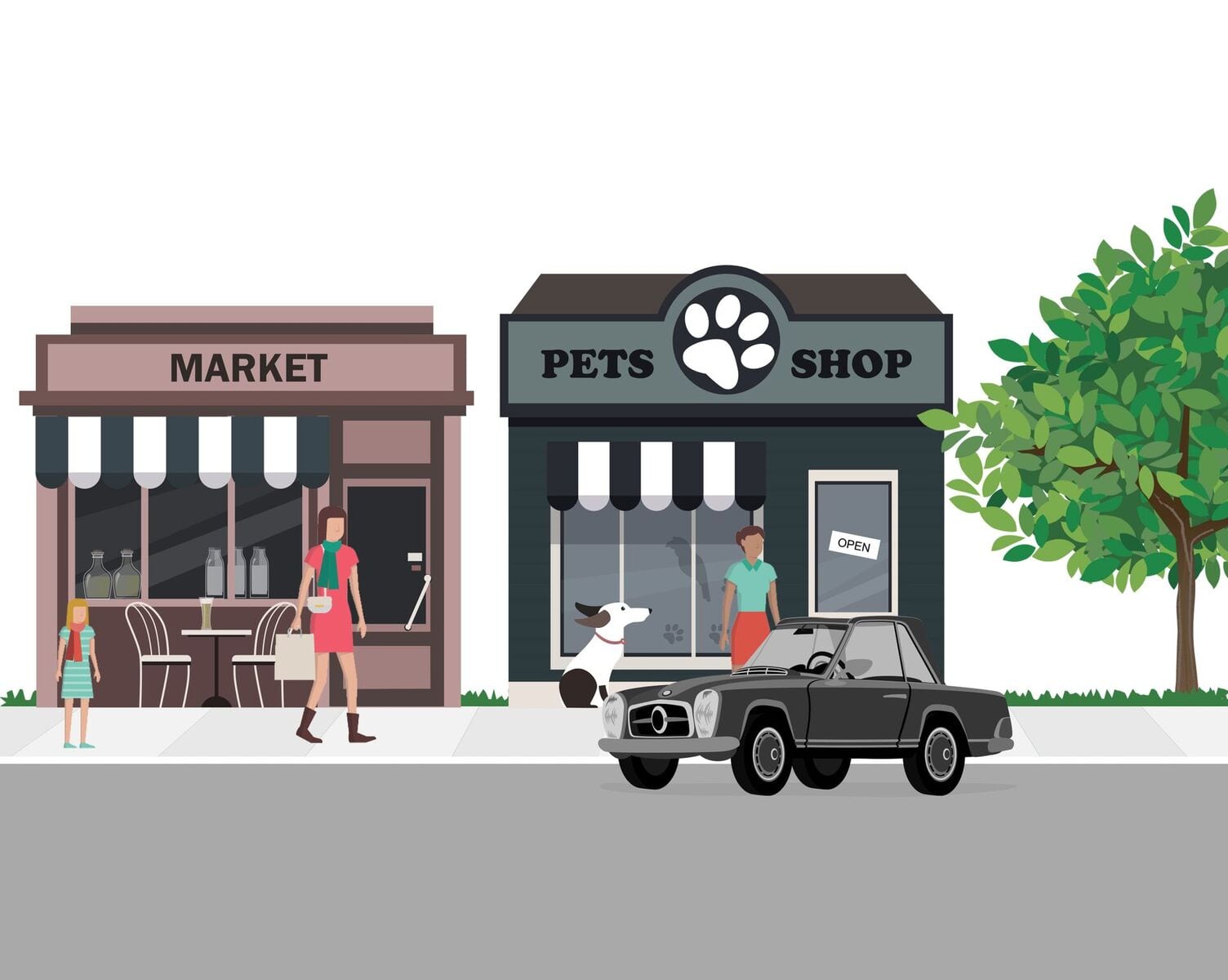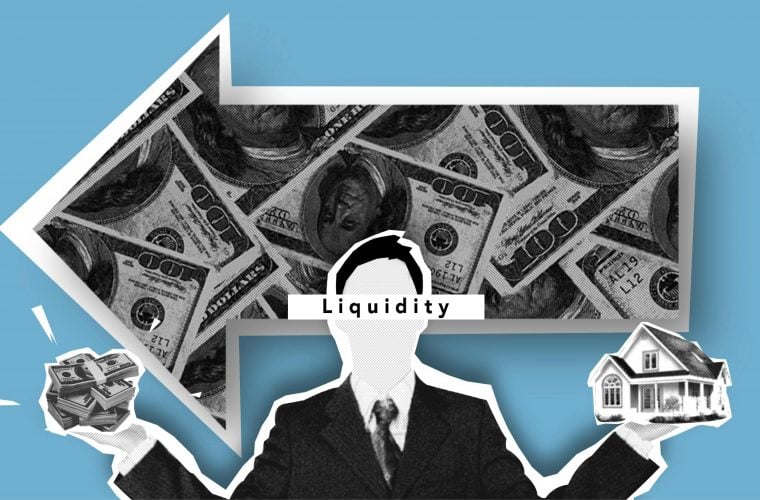
Three Changes that Will Disrupt Retail Within the Next Five Years
By Ben Zifkin, Founder of Hubba.
Every “law” of retail is being rewritten.
The last century has been dominated by giant brick-and-mortar retailers and conglomerate mega-brands. Sears, Unilever, and their kind have stood more or less unchallenged.
Fast forward to now: Sears’ has closed 100s of locations, operates at a massive loss, and has seen the value of their shares fall over 95%. Unilever, on the other hand, just had to spend $1 billion to acquire a company who captured a chunk of Unilever’s market using YouTube videos—The Dollar Shave Club.
Every major retail sector is experiencing the same decentralization. In 1980, for example, there were six major jean brands in America. In 2013, there were over 800.
Clearly, retail has changed.
The internet has allowed companies to go direct to consumer, relieving their dependency on brick-and-mortar retailers. Ecommerce platforms have made it easy for any brand to launch a product, and customers to find them, almost removing startup costs.
Digital marketing has given small brands the ability to reach massive, engaged audiences at low cost—effectively nullifying the giant marketing budgets of big brands. By undercutting traditional media like radio, print, and tv, digital marketing has made it possible for the smallest brand to get their message out.
And this is just the beginning. Retail is shifting at incredible speed, and it all comes down to four essential changes in consumer purchasing behavior.
1. Today’s Consumers Prioritize Connection
For a new generation of consumers, price is no longer the most critical factor in buying decisions. They are willing to pay a higher price for products whose brand story, aesthetics, and values match theirs.
For example, look at the success TOMS has enjoyed with younger consumers. TOMS markets primarily to consumers between the ages of 19 and 24, a group that is incredibly socially conscious, with historically high rates of volunteerism.
Through marketing campaigns like their One Day Without Shoes movement, where over 250,000 people went shoeless for a day, and their promise to donate a pair of shoes to the third world for every pair sold, TOMS has become a force within their demographic without having to compete on price.
How much of a force? As of 2014, TOMS was valued at $625 million.
Building this connection with consumers isn’t limited to incorporating a charitable cause with your product. Retailers who create unique, valuable buying experiences for consumers in the physical world through pop up retail, or in the digital world with data-driven, personalized offerings, can foster this connection with their consumers and win in their market.
The bottom line is that the “race to the bottom” price wars we’ve seen with retailers in the past is fading. The new generation of consumers value brands they feel connected to, not brands that offer them the lowest price.
2. The Buying Process Has Been Revolutionized
Not only are consumers redefining value with their purchasing decisions, but they’re going through a buying process that was unimaginable 20 years ago. Today’s buying process involves discovery, research, and decentralized distribution.
Traditional Advertising Has Lost Much Of Its Power
Consumers no longer have to rely on traditional commercials or magazine ads to find new products. Traditional advertising relied on taking a single message and broadcasting it to as many people as possible. The future of advertising is completely different.
In the next five years, advertising will become almost completely personalized. Measuring how many people see an ad will be useless, because no two people will see the same ad.
We’ve already seen the beginning of this trend with targeted digital advertising, but that’s just the tip of the iceberg. Imagine an mobile ad for raincoats that only plays when the viewer is outside in the rain? Or a sports apparel brand that sells to you via VR ads that create immersive experiences using your favorite teams and players?
As technology progresses and more consumer data becomes available to advertisers, this high level of personalization becomes cheaper and more accessible to brands of all sizes.
Consumers Are Experts
In the past, the product discovery process was very linear. Consumers had a need, they went to the store, and a salesperson made a recommendation.
Now, consumers are the experts, and they acquire that expertise in a very nonlinear way. Whereas information came to a consumer through one or two sources before, they now have access to a variety of information channels simultaneously.
Before making a buying decision, a consumer may be exposed to endorsements from experts and influencers via social platforms, product reviews on commerce platforms like Amazon, demos through YouTube, large product comparisons in publications like TechRader and The Verge, etc.
Each of these channels is an opportunity for a brand or retailer to connect with consumers.
Over the next five years, the number of channels consumers acquire information through is going to grow. As a result, brands and retailers are going to have more touchpoints to engage consumers throughout the product research process.
There Are (Almost) No Barriers Between Brands and Consumers
Over the last 10 years, online buying channels have allowed brands to sell directly to consumers anywhere at any time. In the near future, this trend will balloon into two key developments:
- Commerce is going to blend seamlessly into consumers’ entire online experience.
- The variety of devices that can make digital purchases will grow.
Brands are going to be able to sell their products through almost any platform a consumer uses.Historically, a consumer may see an ad for shoes on Instagram that directs them to a page where they can make a purchase.Now, a consumer will see a photo of someone wearing a pair of shoes, and be able to order those exact shoes in one click—without leaving Instagram.
The definition of “retailer” then becomes more fluid. A social platform could be a retailer, a brand, and an advertising platform. In the same way, a brand can be a retailer and vice versa.
This fluidity means that classic retailers need to find a new role to attract customers. You can see this right now with the rise of pop-up retail and increased emphasis on creating unique customer retail experiences.
Purchasing behavior isn’t just being integrated into more channels, however, the number of devices consumers can buy from is increasing as well.
In the near future, smart devices are going to be able to make purchases automatically based on consumer needs and preferences. For instance, imagine a refrigerator that automatically stocks itself according the owner’s preferences. How might that affect the relationship between retailers, brand, and consumers?
3. Alternative Purchasing Models Are Gaining Popularity
The traditional purchasing model, in which a consumer needs or wants a good and buys it from a retailer themselves, is not the only model. In particular, there are two that are gaining steam right now that will continue to grow in popularity over the next five years.
Subscription Economy
In the traditional purchasing model, every purchase requires a decision. Even if a consumer is loyal to a brand, each purchase is still a distinct decision.
Subscriptions change that paradigm. Instead of paying per product or service, customers are subscribing to an outcome. For example, Dollar Shave Club members aren’t deciding to buy new razors or comparing different brands, they’re subscribing to the outcome of having razors in their cabinet.
The subscription model requires shifts in the relationship between brands and consumers. Whereas before, brands and retailers had to use their relationship to encourage subsequent purchases, in a subscription model brands want customers to not make purchasing decisions after the initial buy.
Whatever value you trade on, you have to deliver it continuously. Netflix has to provide new engaging content each month. The Dollar Shave Club has to always make getting razors hassle free. Whatever length your subscription period is, it is an audition.
Invisible and Unconscious Commerce
We’re currently living in an era of invisible commerce where simple transactions, like restocking the detergent for your washing machine, are automated by smart technology.
The Internet of Things is allowing more and more of consumers’ basic purchases to be automated. This technology is already available to consumers, and will grow to be worth as much as $1.7 trillion in 2021.
Unconscious commerce is the next frontier.
Unconscious commerce takes the automation of invisible commerce and applies it to more complicated purchasing decisions. Whereas invisible commerce relies on sensors to buy products you need, unconscious commerce will use massive data sets to buy what you want.
Weather patterns, buying history, affinity groups, and other data points, combined with the power AI, will create an entirely new purchasing model.
How these shifts affect your brand is different depending on what your product is, but you need to analyze each to figure out which will come to dominate your product’s space.
Contributed by Ben Zifkin, the founder of Hubba, the fastest growing business-to-business network connecting brands and retailers. He’s also the author of The Rise of the Craft Brand, a look at how the changing world of commerce will favor smaller companies.














